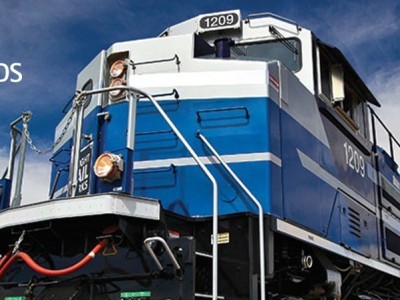FTR’s Trucking Conditions Index for October jumped to highest level ever measured
Dec 18, 2020FTR’s Trucking Conditions Index for October jumped to the highest level in the nearly 30 years captured in the data to a 16.17 reading. This record comes just six months after the lowest TCI reading ever recorded (-28.66 in April) during the initial phases of the pandemic.
October’s extraordinary market conditions resulted from a sharp increase in capacity utilization, a robust rate environment, and improving freight demand. While October might prove to be the peak in this cycle, FTR forecasts positive TCI readings at least through 2021.
Details of the October TCI are found in the December issue of FTR’s Trucking Update, published November 30. Additional commentary includes an overview of the significant recovery for the goods transport sector in Q3, which greatly outpaced the broader economy. Beyond the TCI and additional commentary, the Trucking Update includes data and analysis on load volumes, the capacity environment, and rates. FTR also publishes ongoing publicly available analysis on the impact of COVID-19 on freight transportation at FTR’s COVID-19 intelligence.
Avery Vise, vice president of trucking, commented, “The big swing in the economy during the pandemic naturally produced a big swing for the trucking industry. Government stimulus, pressure resulting from extraordinarily lean inventories, and a shift in consumer spending toward goods instead of services have combined to restore a huge chunk of the freight demand lost this spring. Meanwhile, both typical and extraordinary stresses on the supply of drivers has driven up capacity utilization and fueled higher rates. Freight demand growth should moderate to a more sustainable level, but constraints on driver capacity will be hard to overcome until COVID-19 vaccines are widely available. The result should be a healthy environment for trucking even if freight demand were to prove a bit weaker than we are forecasting.”
The TCI tracks the changes representing five major conditions in the U.S. truck market. These conditions are: freight volumes, freight rates, fleet capacity, fuel price, and financing. The individual metrics are combined into a single index indicating the industry’s overall health. A positive score represents good, optimistic conditions while a negative score represents bad, pessimistic conditions. Readings near zero are consistent with a neutral operating environment, and double-digit readings in either direction suggest significant operating changes are likely.
Similar Stories
USDOT appoints WSP’s Nate Bryer to Advisory Board considering road usage charging
The U.S. Department of Transportation appointed Nate Bryer, WSP senior vice president and road usage charging (RUC) business lead, to its new Federal System Funding Alternative (FSFA) Advisory Board, a…
View Article
Norfolk Southern reports more than $4.3B in industrial development activity in 2024
View Article
AAR applauds Patrick Fuchs STB Chairman designation
View Article
AAR Statement on the Inauguration of Donald J. Trump
View ArticleBlueGrace Logistics Announces 2024 LTL Carrier Award Winners: Southeastern Freight Lines and Old Dominion Freight Line
BlueGrace Logistics (BlueGrace), a leading Third-Party Logistics (3PL) provider operating within North America, is excited to announce the recipients of its 2024 LTL (Less-Than-Truckload) Carrier Awards, honoring carriers who demonstrate…
View ArticleFTR Reports U.S. trailer net orders in December at 25,334 units, the most since October 2023
Total trailer production declined 10% m/m in December to 11,827 units, a relatively typical seasonal drop. However, production was down 40% y/y – 43% below the five-year December average –…
View ArticleGet the most up-to-date trending news!
SubscribeIndustry updates and weekly newsletter direct to your inbox!





